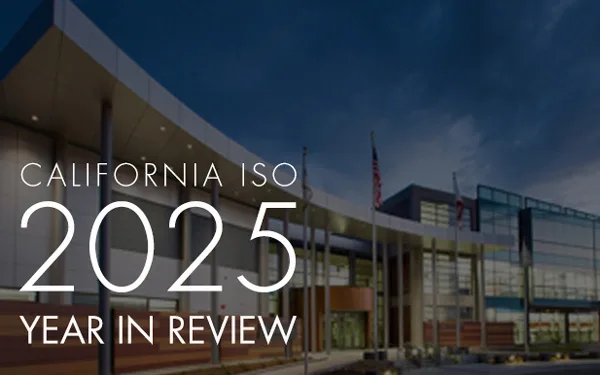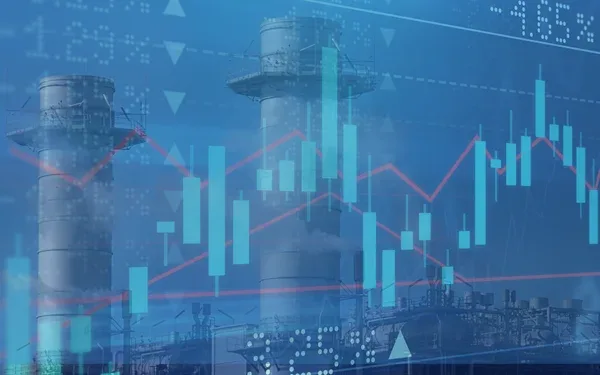Next steps on EDAM

With momentum building across the West for greater regional coordination, it was exciting to formally begin our Extended Day-Ahead Market (EDAM) stakeholder process last week.
We had a very productive and positive all-day workshop on Friday Nov. 12. It set the tone for what I am confident will be an open and inclusive process that thoughtfully considers the different perspectives and interests held by those of us in the energy field throughout the region.
I know everyone at the ISO is upbeat about this initiative and the benefits it can bring to electricity customers across the Western United States. I also know that when all is said and done, it will ultimately be our stakeholders and regional partners with the most to say about whether we can collectively make this happen.
So far, I am happy to report, the prospects seem encouraging as we dig deeply and enthusiastically into the market design work ahead of us all.
The ISO’s EDAM initiative did not happen in a vacuum. Ever since our first regional market, the Western Energy Imbalance Market (EIM), was launched with PacifiCorp in 2014, we have seen firsthand the beneficial results for a diverse set of customers and energy providers in California and the West finding common ground to work together and achieve shared goals while also addressing our various challenges. There is also a recognized governance structure in place that has evolved along with the market, now providing shared authority between the EIM Governing Body and the ISO’s Board of Governors on applicable EIM market rules.
As the Western EIM has continued to grow, it has produced more than $1.7 billion in cumulative benefits to market participants and helped reduce greenhouse gas emissions throughout the West. It has also helped balance supply and demand by expanding the footprint and facilitating more optimal use of diverse generating resources.
There are many tangible reasons that the Western EIM footprint now includes portions of nine states in addition to California, and that by 2023 active EIM participants are expected to represent more than 84% of the West’s demand for electricity.
Now, as states throughout the region deal with the growing impacts of climate change and how to best reliably use their evolving resources and transmission, we believe EDAM is the next logical incremental step in unlocking the value of enhanced coordination and cooperation and to extend market benefits more broadly.
By extending the benefits of regional coordination from the EIM universe to the much larger and more impactful day-ahead market, the ISO and those partnering with us in this initiative feel a growing sense of momentum and urgency to take advantage of this historic opportunity.
As I highlighted during my overview at the Nov. 12 meeting, expected EDAM benefits include:
- Potential production cost savings through:
- More efficient day-ahead hourly trading and use of available transmission across the market footprint
- More efficient day-ahead unit commitment
- Cost-effective day ahead solutions for serving load across a larger market footprint
- Load and generation diversity benefits across a larger geographic area:
- Diversity of load patterns can reduce capacity needs and costs
- Diversity of supply can help meet flexibility needs of the entire system
- Potential environmental benefits:
- Reduced curtailments of renewable generation
- Greenhouse gas reductions through dispatch of least cost generation
To build EDAM and take advantage of this potential, we understand the need to address key issues that include the equitable treatment of policy design on resource sufficiency, transmission, accounting for GHG emissions and more.
And to ensure that we openly discuss and consider everyone’s concerns, the EDAM initiative stakeholder process will be fully transparent and inclusive of all stakeholders. That means all stakeholders will have an opportunity to participate in the development of the final EDAM proposal.
We are committed to conducting a transparent stakeholder process that gives all participants multiple opportunities to provide iterative comments as an EDAM proposal evolves. Based on feedback we heard from stakeholders through working group discussions and at the Nov. 12 workshop we will begin the initial working group meetings in January which and will be structured to solicit input and guidance in the development of a comprehensive straw proposal in partnership with stakeholders.
I feel confident this front-end working group approach will help create a more informed initial proposal. Once the comprehensive straw proposal is published, we will continue with an open and transparent stakeholder process where we consider and refine the EDAM proposed design across the course of 2022.
The rest of November and December will give us time to organize and prepare for the working groups successful start. It also allows us time to work collectively to bring some foundational matters from last summer’s experience in alignment for starting the EDAM policy development on issues such as transmission priorities and the EIM resource sufficiency test.
Alongside the market design work, there will also be a public review of the governance structure that will once again evolve to support the new EDAM framework. It will be rooted in the consensus-driven work initiated by the EIM Governing Body and ISO Board through a stakeholder-driven Governance Review Committee.
This is an initiative that the ISO and many others believe can be a real game changer for delivering reliable, safe, clean and affordable energy to millions of consumers throughout the West. I feel confident the process we have established will ensure that whatever we collectively come up with will have considered the needs and interests of everyone involved.


